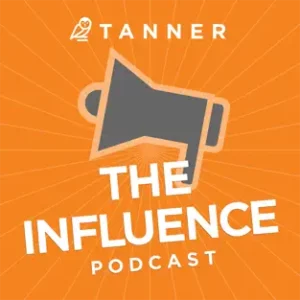We are very excited to share our Spring 2022 edition of Tanner’s Not-for-Profit News with you! We hope you will find the articles timely and full of insights that are valuable to you and your organization! If there are others in your organization you would like to add to our email list, please email Katy Hepworth at kehepworth@tannerco.com to be added to the list.
The New Normal
Nonprofit Priorities Focus on Workplace Issues

Which came first: nonprofit workplace issues or the pandemic?
According to the most recent Nonprofit Benchmark Priorities Report conducted by Wipfli, the top challenge that nonprofit leaders reported—employee burnout—is not a new concern. Workforce-related issues have been rising dramatically over the past few years, but the pandemic brought them into new focus. Indeed, workforce issues were identified as a top challenge by only 8.5 percent of respondents in 2018, compared to 62 percent of respondents in 2021.
Three Challenges at the Top
Burnout isn’t the only serious challenge identified in the geographically diverse report. Fundraising was the second-most identified challenge, followed by recruitment. Here’s more about these concerns for nonprofit organizations:
1. Employee Engagement
Burnout is real.Organizational culture, engagement, and morale suffered as nonprofits switched to remote work environments and, in the case of performance venues, prolonged closures. For organizations focused on human services missions such as medicine, public health, and social services, increased demand underscored employee exhaustion.
Nonprofit executives identified several leadership and management development challenges related to engagement, with communication ranked at the top by 46 percent of respondents. Employee safety ranked second, with 44 percent of respondents naming it as a priority for the upcoming year. Both of these priorities have clear links to the pandemic.
Because remote work arrangements will likely continue for many organizations and safety concerns are still relevant, renewed thinking is required for employee engagement. The survey suggests several steps to building a new, strong culture.
- Assess your current situation. A culture “audit” will let you know how your organization is faring today and which issues demand prioritized action. Consider an employee survey and focus groups followed by assessment and recommendations.
- Use the right tools. Everyone who works remotely must have updated technology and training to be productive offsite.
- Be clear. Be explicitly clear about what you expect from your employees in terms of hours, reporting, work product, and interaction.
- Create a water cooler. It’s hard to overstate the importance of casual interaction. For all employees—remote and in-office—end-of-week check-ins or social hours offer a way to get to know and learn from each other.
- Respect schedules. Just because people are working remotely doesn’t mean they’re available at all hours. Be respectful of workers’ life balance.
2. Fundraising
It’s no surprise that fundraising was the survey’s top financial concern for nonprofit executives. Fundraising is always top of mind for these leaders, but the past two years have created special challenges. With appealing, reliable events like galas and fun runs off the calendar, nonprofit organizations have had to try new ways to attract attention and wallet share.
Among other financial priorities for the year are identifying additional grant opportunities, implementing operational efficiencies, addressing employee compensation and benefits, and improving program metrics and results.
To meet these financial challenges, the survey suggests several steps:
- Use technology. Technology has never been so important to fundraising. A slick website with an easy-to-use donor portal, social media links, and proactive database management can make the difference between financial success and a so-so financial picture.
- Tap the board. Your board has a lot to offer in terms of financial analysis, donor experience, and fundraising innovations. Use them as a sounding board and as fundraising ambassadors.
- Get the right people. As your fundraising needs evolve, so must your team. Think about restructuring or hiring to optimize skills and talents.
- Focus on process. Small changes can have big impact. Consider how your team works and tighten up any loose connections and processes.
3. Recruitment/Workforce
According to Pew Research Center, 30 million baby boomers retired in the third quarter of 2020. This “Great Retirement” comes in tandem with the “Great Resignation,” which saw 4 million workers leave their jobs just in July 2021. According to the U.S. Bureau of Labor Statistics, most of these workers are in the 30-45 age range, so they represent seasoned employees who carry a significant amount of institutional knowledge.
How can your organization find and keep the talent you need? Try these approaches:
- Cast a wide net. Of course, you can use the typical online resources to post your job openings and attract candidates, but don’t overlook other sources of referrals. Your team of trusted advisors—CPAs, attorneys, board members, and insurance agents—know a variety of people with a range of skills and talents. Depending on the breadth of your search and mission, you can also turn to the nonprofit industry, chambers of commerce, and even neighborhood websites for candidates. Think out of the box.
- Create good job descriptions. Be as specific as you can about the experience and skills you’re seeking while leaving the door open to different types of workers. A candidate doesn’t necessarily have to have done the same job before if his or her skills are transferrable to your circumstances.
- Onboard aggressively. Wow your new hires with a great experience. Get the whole team involved in welcoming, educating, and assisting new workers. Make your expectations known, and offer plenty of support.
- Refine succession plans. Create a strategic document that covers next steps if an executive, board member, or key worker leaves your organization. Be aware of how you can grow and develop in-house talent into leadership positions.
Make a Plan, Take Heart
Your organizational priorities may not line up precisely with those outlined in the survey, but chances are there is some overlap. As mentioned above, it might be wise to consider a survey of your own to get the pulse of your workforce and determine your priorities.
While workforce issues seem daunting and competition for talent is stiff, nonprofit organizations have proven to be flexible and strong through the pandemic. While many nonprofit organizations have faced enormous challenges, the majority have survived, learned, and adjusted. Nonprofit leaders tend to be good problem solvers, which sets them up for success now and in the future.
Our team can help you tackle your toughest challenges and focus on your top priorities. Give us a call today.
Word to the Wise
How to Work Best with Your CPA

It’s been a challenging few years. Yet, thanks to hard work, resilience, courage—and in some cases, good luck—vibrant nonprofit organizations have survived and thrived. As the pandemic (hopefully) runs its course, it’s a good time to assess and plan. The good news is there’s a team of financial and organizational advisors ready to assist.
Here are several best practices for how to best work with your CPA and other advisors:
Financial management and compliance: This is the core of your relationship with your trusted financial advisors. Your CPA is eager to help you run your organization in a financially responsible and efficient way, from basic accounting practices, budgeting, and reporting to forecasting and regulatory compliance.
Your financial advisors can help you with more specific issues as well, such as maintaining tight internal controls, policies and procedures, specialized software, and technology.
Having a financial “reset” conversation every year gives you the opportunity to chat with each other about what’s ahead in terms of new regulations and how you might improve your organization’s financial efficiencies.
Purchase and sale decisions: If your organization is considering expanding its footprint, investing in new equipment, selling a significant asset, moving, or making a similarly big decision, talk to your CPA before taking action. He or she will have ideas about how to structure purchases or sales to be most advantageous to the organization. As always, the earlier you get your trusted advisors involved in these types of decisions, the better.
Ideas and opinions: It’s important for nonprofit leaders to have a sounding board to vet ideas and hone opinions. Your advisory team works with clients in many types of industries and can share a variety of perspectives and experiences. Sometimes it’s helpful to just have a good listener for a confidential conversation about an employment matter or ethical dilemma.
Board education: Ask your CPA to present your audited financial statements to the board in person. The board must understand the financial statements to govern effectively, and it’s wise to establish open lines of communication with your auditors.
Board recruitment: It’s likely that your CPA and his or her colleagues serve on various boards and have therefore seen the best (and worst!) of nonprofit governance. Your advisors can weigh in on which skills you need on your board and, based on their community involvement, may even have suggestions for individuals to fill various roles.
Staffing: Your CPA can help with staffing issues by identifying skills gaps, reviewing job descriptions, and sharing thoughts on workflows. In addition, your CPA firm can provide outsourced services from basic bookkeeping to CFO duties, depending on your needs and auditor independence requirements.
Reviewing documents: In addition to having your attorney draft and review important documents, have your CPA review them, too. These documents include bylaws, insurance policies, and contracts. Your CPA can give an opinion on how these agreements can be structured in light of your specific organizational circumstances.
Deterring fraud: Nonprofit organizations are often susceptible to fraud because of limited operating budgets and fewer resources to protect themselves. Your CPA can assist with training to increase vigilance up and down the org chart and help executives set a tone of zero tolerance. Your CPA can also help to implement secure internal controls, which are a key step to deterring fraud.
Your CPA is your ally, with your organization’s best interests in mind. Working closely with him or her is the best way to protect your organization’s assets and set up a successful future.
Have questions that we can address about your organization? Let’s set up a time to talk.
Interns vs. Volunteers – Who Should Get Paid?

Over the next few months, many nonprofit organizations will begin seeking summer interns. Well-managed internships provide great benefits for both the intern and the organization. Interns get a taste of the nonprofit world, and nonprofits not only get an additional worker, but can also spread their message about the organization’s mission.
Many organizations have unpaid internships, which by definition makes the interns volunteers. Some organizations pay their interns a “stipend.” Either arrangement is at the discretion of the nonprofit, and nonprofits tend to have more flexibility in this arena than for-profit companies.
However, be cautious if you’re trying to have it both ways. If you pay your interns a stipend, that compensation may cause the Department of Labor to classify the interns as employees. Employees must be paid at least minimum wage and may qualify for overtime. Interns who are volunteers do not need to be paid.
The Department of Labor has guidance to help employers properly classify interns. This guidance, “Fact Sheet #71: Internship Programs Under the Fair Labor Standards Act,” enumerates seven criteria that help determine whether an intern should be classified as a volunteer or an employee. Most of these criteria are focused on which party is getting the greater benefit from the work. Generally, if the employer is getting more benefit, the intern should be paid, but each case is different.
According to the National Association of Colleges and Employers, about 40 percent of internships are paid—though this percentage is growing—and hourly compensation is in the $20/hour range. Organizations deciding whether to pay interns must tackle the legal ramifications as well as any ethical issues regarding work that benefits the organization’s financial position. Familiarize yourself with state and federal laws regarding internships. Clear and consistent communication regarding status, start and stop dates, duties, benefits, and compensation should be in writing so there are no misunderstandings.
Click this link to check out our new Tanner’s Impact Podcast, where we highlight local not-for-profit organizations and the important work they do in our communities! Episode 1 with Dave Durocher from The Other Side Academy is out now!


